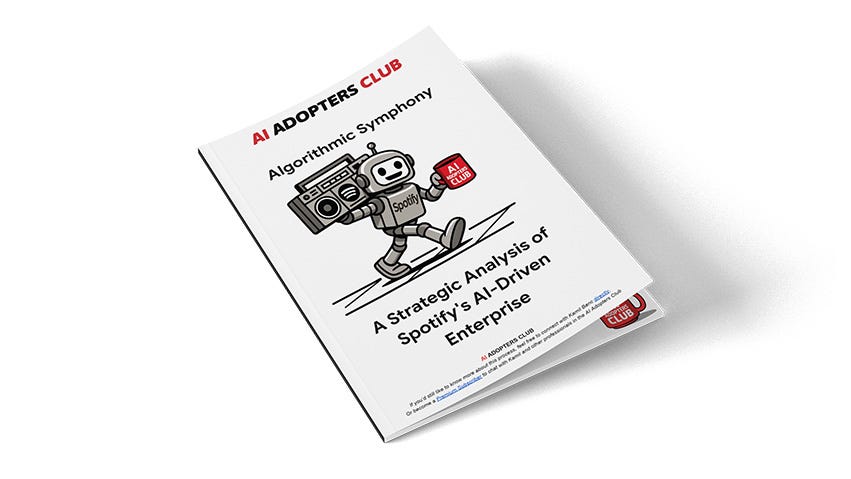How Spotify Became an AI Company That Happens to Stream Music
The $31 billion lesson in building AI as infrastructure, not decoration
Thank you to Marcus Bell for lending his voice to AI Adopters Club 👆
Hi Adopter,
Spotify's AI strategy generated $4.2 billion in revenue last quarter, but its biggest lesson isn't about algorithms.
The $31 Billion AI Experiment
When most companies bolt AI onto existing products, Spotify rebuilt its entire business model around it. With 678 million monthly active users and a market cap north of $31 billion, they've proven that AI-first thinking can transform commoditised industries.
But here's what makes Spotify's approach genuinely instructive: they didn't just optimise for engagement metrics. They optimised for lifetime value using AI to predict and maximise long-term customer relationships rather than chasing short-term clicks.
The result? Users who engage with AI-powered features like Discover Weekly stream more than twice as long as those who don't, and show dramatically higher retention rates.
What Spotify Got Right About AI Implementation
They Made AI Invisible Until It Mattered
Spotify's recommendation engine processes over half a trillion user events daily - plays, skips, saves, searches. Yet most users never think about the AI. They just know their Discover Weekly playlist "gets them."
This invisibility is strategic. The AI works in service of music discovery, not as the main attraction. When they launched the AI DJ feature, over 50% of first-time users returned the next day, and active users spend 25% of their listening time with the feature.
The lesson: AI should enhance core value, not replace it. Users care about outcomes, not algorithms.
They Built AI as Infrastructure, Not Features
While competitors added AI tools, Spotify architected their entire platform around machine learning. Their approach combines three core technologies:
Collaborative filtering (what people like you enjoy)
Content-based analysis (sonic similarity using neural networks)
Natural language processing (cultural context from web content)
This isn't just recommendation tech. It's the foundation for everything from AI-generated advertising scripts to automated podcast discovery.
The lesson: Think platforms, not point solutions. AI infrastructure pays compound dividends across multiple use cases.
They Acquired Strategic Capabilities, Not Just Talent
When Spotify wanted to create an interactive AI companion, they identified a specific blocker: existing text-to-speech sounded robotic. So they acquired Sonantic, a startup focused on "stunningly realistic" AI voices.
Six months later, they launched the AI DJ with commentary that feels genuinely conversational. The acquisition wasn't about acqui-hiring engineers. It was about removing a precise technological barrier to a pre-defined product vision.
The lesson: Strategic M&A in AI should solve specific capability gaps, not generic "AI talent" needs.
The $509 Million Mistake Hidden in Plain Sight
But Spotify's AI dominance masks a fundamental strategic vulnerability that threatens everything they've built. Despite posting record operating income of $509 million last quarter, they're walking into a trust crisis that could undermine their entire competitive moat.
The warning signs are already visible. Their 2024 Wrapped campaign backfired spectacularly when users rejected AI-generated podcast summaries of their listening habits. What seemed like a natural evolution felt impersonal and tone-deaf.
This failure reveals something deeper about Spotify's approach to AI - and it's exactly the mistake your organisation needs to avoid.
Download the full strategic analysis to discover:
The "black box" problem that's creating regulatory risk across 180+ markets
How Discovery Mode's pay-for-play mechanics threaten user trust (and what to do instead)
The specific AI governance framework that prevents "Wrapped 2024" disasters
Why their creator monetisation strategy could backfire spectacularly
The three KPIs every AI-first company must track (but most ignore)
Get the complete 25-page analysis here (all source links listed at the bottom of this article)






